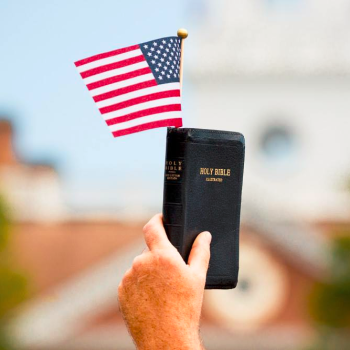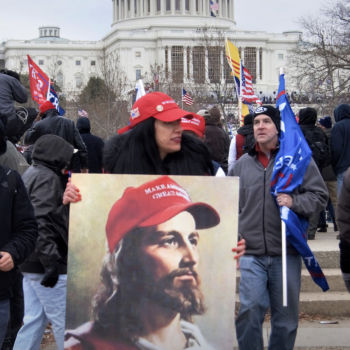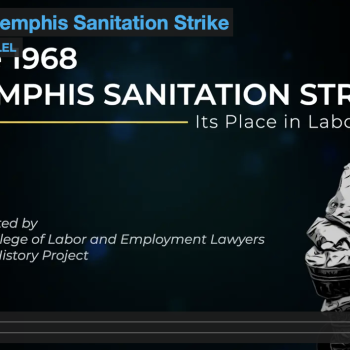Over the past few months, I’ve seen a variety of thought pieces by clergy-adjacent leaders asserting it’s really bad for pastors out there right now. I don’t know exactly why they think this, other than their reliance on a few popular bloggers who claim the “Great Resignation” among clergy is bigger than the general “Great Resignation.”
I blame this one blog post by Carey Nieuwohf, who manipulates the narrative around the numbers in order to draw the conclusions he draws. But that’s not unusual with Carey’s blog. He has wide influence but a distorted picture of reality, I think.
Anyway, closer to home, Lutheran blogger Anna Madsen recently wrote a Reformation Day Letter to the Laity: Your Rostered Leaders Are In Some Not-Making-It-Up Real Need of Your Priestly Care
In it, she claims:
A vast number of your church leaders are absolutely beyond spent.
If they haven’t already, many are contemplating leaving not just their immediate calls but their Call writ large, if not considering up and leaving the Church entirely.
I’m not making it up: we have a crisis on our hands, and rostered leaders desperately need lay ministers to assist them to simply hang in there another day.
Madsen gets something right in her blog: she points out the the pressure point for clergy in some congregations is the pain of attempting to hold churches together made up of a broad spectrum of conservative and liberal members.
I’m afraid many clergy, for a long time, have assumed that part of pastoral ministry is attempting to keep everybody together in the church and so de-politicizing the gospel in order to not offend.
But that was always just a delay tactic. Eventually you hit some kind of historical moment (like a pandemic, or a presidency by a fascist gambling and business magnate who wants to co-opt Christian nationalism to feed his narcissism) and the delay tactics of the moderates come back to bite them.
But where Madsen goes off the rails is in her next step. She wants everyone to have sympathy for how bad clergy have it these days in churches where some people want masks and others don’t, where some think Trump is the Messiah and others recognize him as a threat to democracy.
Specifically, she writes to “the laity” and wants them to do supportive things for the clergy, as if the solution to the struggle of clergy right now is to just get a little love and some casseroles and more vacation time.
Well, I feel it might be good to say a few truer things about this situation than that, so this is my “moderates reap what they sow” commentary on the current state of the church and the struggle clergy may find themselves in.
- Can we please be done with the term “laity”? Last I checked the people of God were all in mission together. Setting up the laity as the ones who need to help cushion the clergy makes it sound like the clergy are doing all the heavy lifting while the laity make their coffee.
- Things aren’t going to be better for clergy just because a few people read a blog post and then start cheering for their pastors more frequently. If your tenacity for pastoral ministry is grounded in an extra week of vacation and more hand-clapping for your sermons, then you might as well move on to something else.
- Let’s be real. Some parts of pastoring through the pandemic were complex, and we had to create solutions, but pastoring during the pandemic was still a cakewalk compared to nursing, teaching in public schools, doctoring, deboning chicken in the factory, etc. Acting like this pastoring this is so arduous is a very weird flex.
- Pastors, if in 2020 you were serving a congregation in which some members of the church genuinely thought a January 6th attempted coup would be okay, or were ready to believe that a vaccine contained microchips, or look to Qanon for wisdom, then you weren’t really doing your job. If things are hard now, get to it. You’ve got work to do.
- But most importantly, the pandemic was a tremendous opportunity to remind ourselves of something that has been true all along throughout the history of the church: we’re in this together. Healthy clergy don’t need bloggers to tell the laity to support them. Healthy clergy figure out how to be non-anxious enough to ride through the pandemic while inviting the people of God into what they see as the current calling of the church to serve the world and neighbors in need.
Here’s my personal testimony: the pandemic was hard for me, like it was hard for everyone. It was surprisingly exhausting in ways I didn’t anticipate, it changed the world in enough ways I see everything differently now, and we closed our indoor worship experience for almost eighteen months, something I never would have imagined.
But we also launched a new ministry with our Marshallese neighbors, gathered hundreds of thousands of dollars in donations to help people pay rent and utilities and get fed, launched Queer Camp, and live-streamed our hearts out and explored how to deepen the experience of church as digitally social mediated.
I guess what I’m saying is this: it’s not the job of “the laity” to fix things for the clergy. Leaders lead. If you can’t lead, don’t do that gig. Without a vision the people perish. Right? Well, the vision simply can’t be, “The people need to be nice enough to me.” That’s not a vision.
A vision is more like, “Hey, this has been one hairy and terrible moment. Let’s mourn together, and pray, and listen to what God has in store for us next. And if you have crazy ideas at odds with the gospel of Christ, and those ideas exclude the most vulnerable the church is called to serve, then you’ll need to go find somewhere else to be with your crazy, because this here is the church of Christ.”
Oh, and one more thing: if the survival of the church is dependent on assigning the “laity” the task of buttressing the emotions of clergy, then we might as well let the church die.















